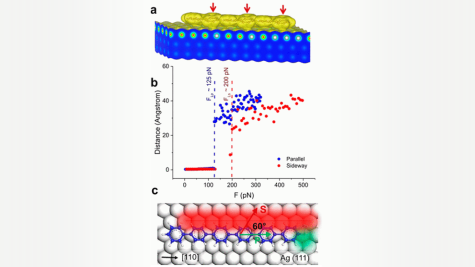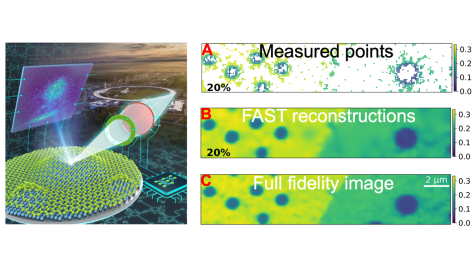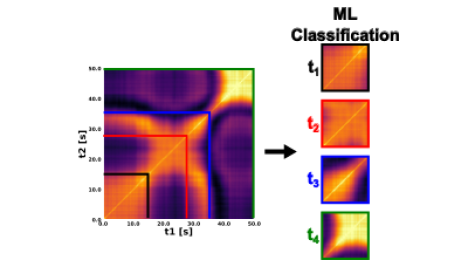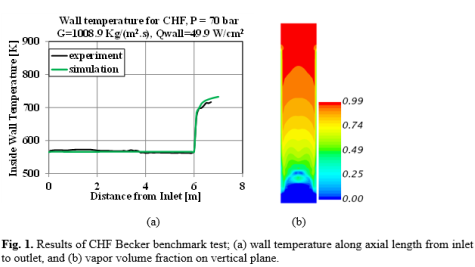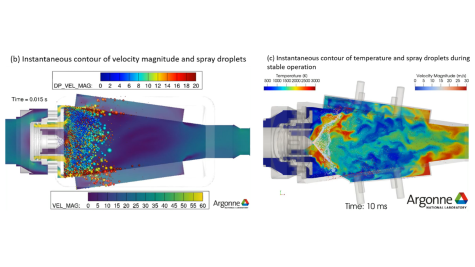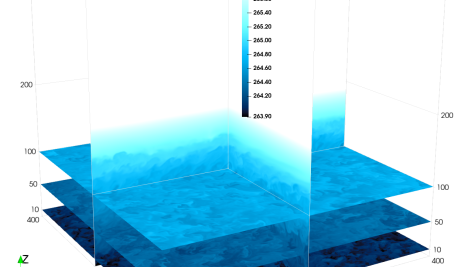Projects
LCRC projects cover many scientific disciplines, ranging from biology and physics to materials science and energy technologies.
Accurate Electronic Structure Calculations of Critical Materials supported on Gold(111) Surface using Large-Scale DFT Computations
The lateral force needed to move a molecule on a surface is important for understanding dynamics as well as related tribological phenomena at the atomic and molecular scales. Using density functional theory and classical molecular dynamics simulations, we demonstrated that it is easier to move the para-sexiphenyl (6P) molecule on the surface of Ag(111) in the direction parallel to their molecular axis rather than sideways. This observation was well in agreement with the experimental findings that 1D molecules required almost double the lateral force to move them on the surface sideways than along the parallel direction.
FAST: Developing AI-powered fast, self-driving microscopes
New scientific instruments can image samples at high resolutions and frame rates, but this comes with large data and sample dose requirements. Autonomous control with the AI-driven Fast Autonomous Scanning Toolkit (FAST) software achieves a 70% reduction in data & dose required for a scanning microscopy experiment.
AI-NERD: AI-Informed X-ray Data Analysis
AI-informed analysis of X-ray science data extends experimental capabilities, guides scientific discovery, and enables precise analysis of materials dynamics in the big data regime.
Simulations of boiling flow in a heated pipe for safety analyses of nuclear reactors
The Eulerian Multiphase (EMP) model in the STAR-CCM+ CFD code was validated through simulations of multiple Becker benchmark CHF tests performed under both DryOut (DO) and Departure from Nucleate Boiling (DNB) boiling conditions. Good agreement was obtained between the calculated wall temperatures and corresponding experimental data. The multi-flow regime model parameters presented, and the constitutive correlations developed for the calibration of the turbulence dispersion coefficient and vapor wall contact area fraction are valid for a wide range of mass, heat flux and system pressures. Further investigation is planned to improve the simulation results of post-DNB wall temperatures for PWR conditions.
Validation of near nozzle spray dynamics
Measurements using Argonne’s Advanced Photon Source (APS) facility provides a first-of-its-kind dataset for initialization and validation of near nozzle spray dynamics.
Simulation of atmospheric boundary layer (ABL) flows for wind-energy production
In this work, performed in collaboration of ANL with NREL scientists, the focus is to examine the accuracy and computational performance of two open-source computational fluid dynamics codes for the simulation of atmospheric boundary layer (ABL) flows that are of direct relevance to wind-energy production.
